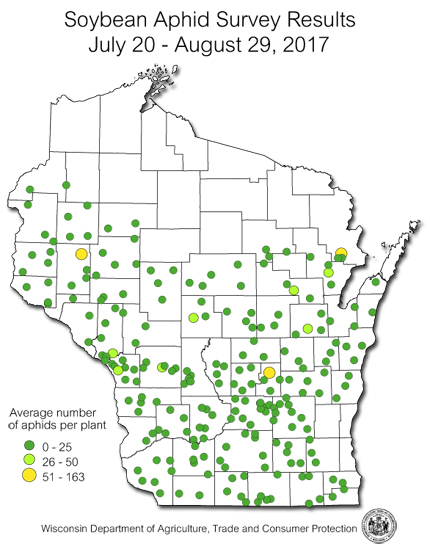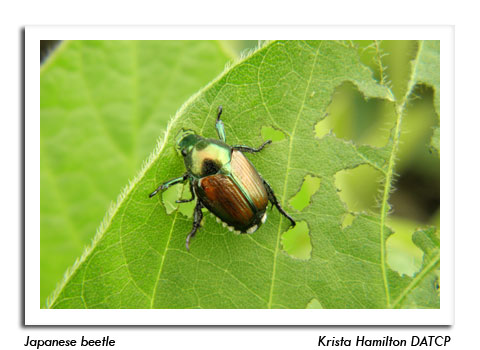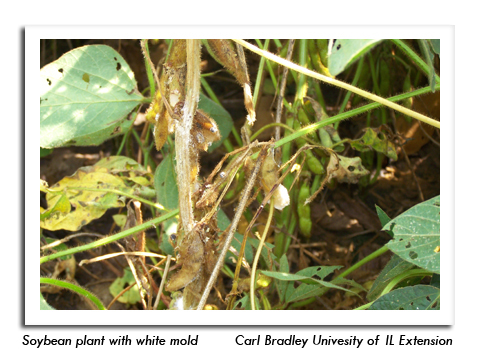
 |
|
|
Soybeans
Volume 62 Number 18 Date 08/31/2017 SOYBEAN APHID - The annual survey conducted in late July and August found a statewide average count of six aphids per plant. This record low average compares to eight aphids per plant last year and is the lowest in 17 years of Wisconsin aphid surveys. Two hundred and twenty-eight soybean fields in the R2-R6 growth stages were sampled, with aphids counted on 40 plants per field. Densities were below 163 aphids per plant in all fields, and the majority of sites had average counts of less than 25 per plant. No sites contained above-threshold densities of 250 or more aphids per plant. Results of the survey confirm that aphid populations were low or moderate in most fields this season and widespread treatment for aphid control was not required. JAPANESE BEETLE - Beetles are still apparent in crops, orchards and residential areas, although numbers are decreasing. Defoliation was observed in about 87% of the soybean fields examined during the aphid survey in August, suggesting that Japanese beetles were more prevalent than in recent years and that this invasive pest has become an increasingly significant threat to the state's agronomic crops. Last season, 74% of surveyed fields had some degree of feeding. Although some beetles may persist into September, much of their activity should decline in another two weeks. WHITE MOLD - Reports indicate this disease is not as severe as expected considering that environmental conditions have been conducive for mold development this season. Soybean producers and consultants are reminded that fields infected with white mold should be harvested last and all harvesting equipment must be thoroughly cleaned between fields to avoid spreading the sclerotia. Rotations of 2-3 years between soybean crops with corn or small grains can also reduce levels of the fungal pathogen in the soil. -- Krista Hamilton, DATCP Entomologist 



|
|
|